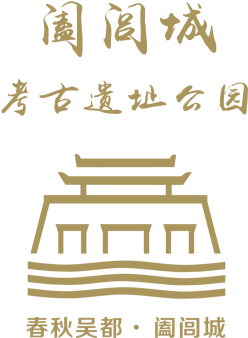

Relics Protection

Legend has it that Lvjiang River was specially excavated by Wu Zixu in order to facilitate the access to Taihu Lake by his water forces. The earth dredged from the river was also used to build the Helv City. Wu really achieved two things at one stroke.
View Details
In the west of Xicheng Village, there is a wide and flat farmland. It is said that this is the ancient drill ground. In the center of the east ground, there stands a square mound which is 2 to 3 meters above the ground and covers an area of 40m × 40m. It is said that this is the ancient call-officer-roll platform. But now it is covered by trees. According to villagers, in the initial post-liberation period, it remained a flat square mound, but was damaged due to brick-firing. It is discovered that the soil archaeologically drilled from the mound is a kind of brown cinnamon soil which is quite different from the surrounding soil but is identical with that used to build the city wall, suggesting that it should also be delivered from the outside of the city.
View Details
In the southeast of Chengli Village, there stand two earth mounds which are believed as the spots to manufacture and store weapons. Now trees and peach trees grow there, and earth graves also lie there. It is said that ancient weapons were unearthed there.
View Details
There is always a ditch running parallel with and out of the city wall, which is referred as the city moat in ancient times. In the cold weapon era, the city moat is the best defense line, and also the major source to supply city-building materials. The archaeological drilling suggests that the original moat was around 20 meters wide and over 4 meters deep. However, its most part has silt up now, with only the section in the west of city remaining navigable.
View Details
Legend has it that the wall of “Helv City” was made with the earth dredged from city moat and Lvjiang River. It is recorded in the Lost History of Yueh that “Wu Yuan builds Helv City with earth excavated from Lipu and Huangdu.” According to the recent earth drilling here, the soil in the city wall is of the brown-cinnamon secondary soil, and is hard, suggesting that it has been rammed. However, there is no such soil in Helv City, suggesting that it is delivered from outside. It is very likely that the soil is taken from nearby mountains, for its texture and color are similar to those of soil in the Xu Mountain and Baiyao Mountain in the east. The drilling performed in well preserved section shows that the original foundation of the city wall was at least 20 meters wide and about 8 meters high. It is said by local villages that in the early post-liberation period, this ancient city wall still stood over three meters despite of disrepair for many years, and had clearly-visible outline. However, since the production team built up two brick kilns in the west of the ancient city, most of the earth was excavated from the city wall to be used to make bricks, thus causing a great damage to it. The existing city wall runs for only about 1,000 meters, about 4 meters wide and 1 to 2 meters high.
View Details
